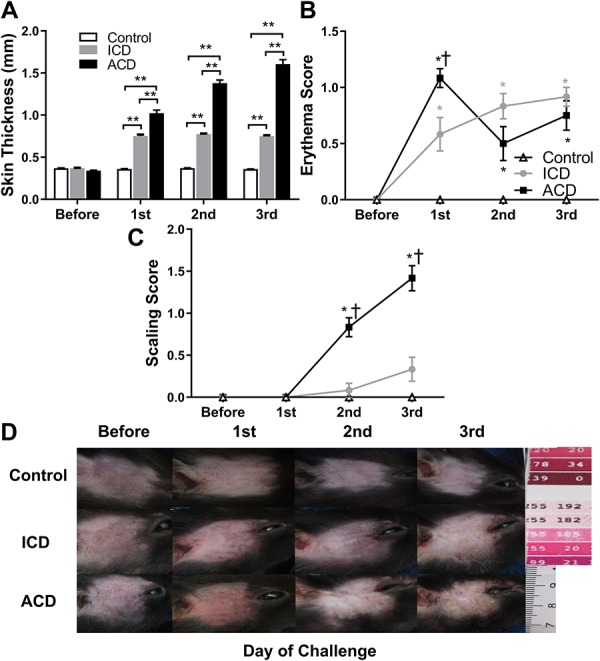Figure 4.

Effects of ACD and ICD on skin thickness and visible signs of inflammation of skin at the challenge site on the cheek. The mean thickness of a fold of cheek skin measured with a micrometer (A) was obtained before and after each challenge with SADBE (ACD or ICD) or acetone vehicle (control). Clinical assessments of erythema (B) and scaling (C) were each separately scored on a scale from 0 (none) to 4 (very marked) (see Methods). In (A), *P < 0.05, **P < 0.01 indicating significant differences between groups, and in (B and C), *P < 0.05 for significance compared with the control group, †P < 0.05 indicating significant differences between ICD and ACD groups, error bars: SEM. n = 12 male mice/group. (D) Exemplary photographs that best represent the visible change of erythema and scaling of the skin of the cheek. Photographs were obtained from different mice tested under a particular experimental condition and point in time. ACD, allergic contact dermatitis; ICD, irritant contact dermatitis.
